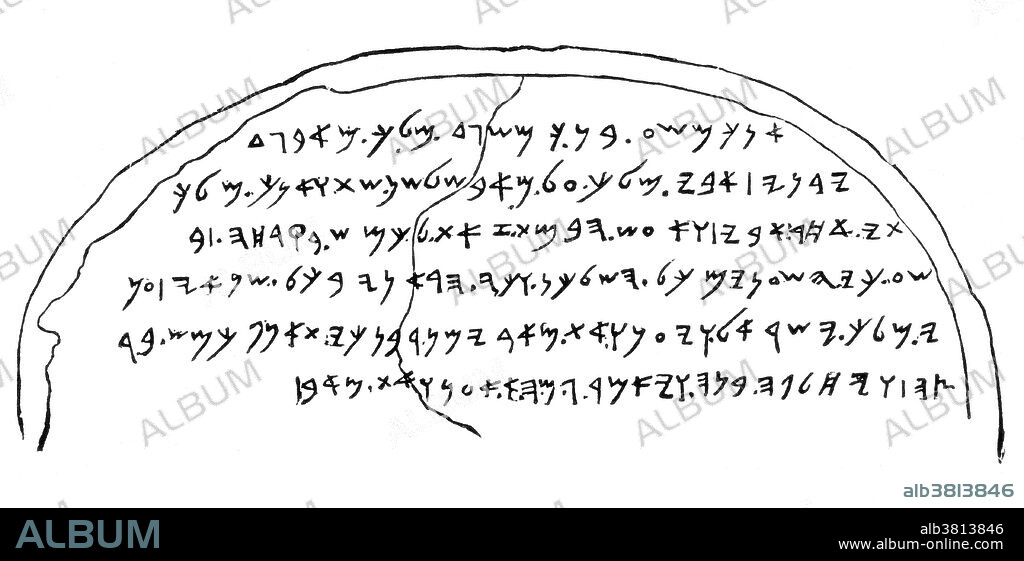alb3813846
Mesha Stele AKA Moabite Stone, 840 BC

|
Ajouter à une autre Lightbox |
|
Ajouter à une autre Lightbox |



Avez-vous déjà un compte? S'identifier
Vous n'avez pas de compte ? S'inscrire
Acheter cette image

Titre:
Mesha Stele AKA Moabite Stone, 840 BC
Légende:
Voir la traduction automatique
The Mesha Stele (Moabite Stone) is a stele set up around 840 BCE by King Mesha of Moab (a kingdom located in modern Jordan). Mesha tells how Chemosh, the god of Moab, had been angry with his people and had allowed them to be subjugated to Israel, but at length Chemosh returned and assisted Mesha to throw off the yoke of Israel and restore the lands of Moab. Mesha describes his many building projects. It is written in the Phoenician alphabet. The Mesha stele is the longest Iron Age inscription ever found in the region, constitutes the major evidence for the Moabite language, and is a "corner-stone of Semitic epigraphy and Palestinian history". The stele, whose story parallels, with some differences, an episode in the Bible's Books of Kings (2 Kings 3:4-8), provides invaluable information on the Moabite language and the political relationship between Moab and Israel at one moment in the 9th century BCE. It is the most extensive inscription ever recovered that refers to the kingdom of Israe, and it bears the earliest certain extra-biblical reference to the Israelite god Yahweh.
Crédit:
Album / Science Source
Autorisations:
Modèle: Non - Propriété: Non
Questions sur les droits?
Questions sur les droits?
Taille de l'image:
4800 x 2381 px | 32.7 MB
Taille d'impression:
40.6 x 20.2 cm | 16.0 x 7.9 in (300 dpi)
Mots clés:
CÉLÈBRE • CELEBRITE • COMMUNICATION • ECRITURE • ILLUSTRATION • INSCRIPTION • ORTHOSTAT • STELE • STELES, TOUS
 Pinterest
Pinterest Twitter
Twitter Facebook
Facebook Copier le lien
Copier le lien Email
Email
